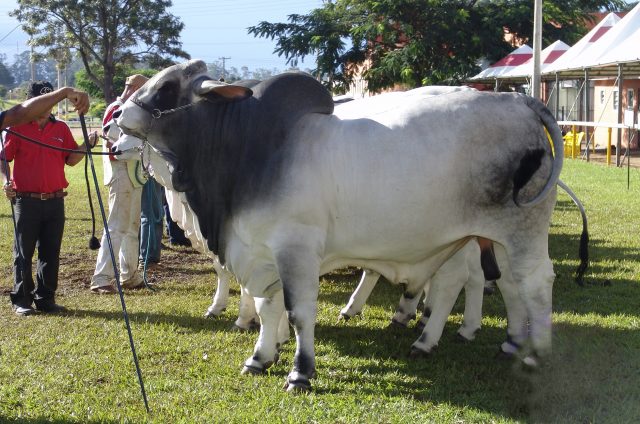Type the name of the breed you're looking for below
[wpdreams_ajaxsearchlite] Don't see the breed your're looking for? Click here and let us know!
Brahman cattle
| Place of Origin | United States of America |
| Origin | The Brahman breed originated from Bos indicus cattle originally brought from India. Through centuries of exposure to inadequate food supplies, insect pests, parasites, diseases and the weather extremes of tropical India, the native cattle developed some remarkable adaptations for survival. These are the "sacred cattle of India," and many of the Hindu faith will not eat meat from them, will not permit them to be slaughtered, and will not sell them. These facts, in conjunction with he quarantine regulations of the United States, have made it difficult to import cattle from India into this country. Some 30 well defined breeds of cattle have been listed in India. Three principal strains or varieties were brought to the United States and used in the development of the Brahman breed are the Guzerat, the Nellore, and Gir. In addition, the Krishna Valley strain was introduced and used to a lesser extent. The general similarity of the Guzert strain to the cattle selected and developed in this country would indicate that cattlemen working with the breed have generally preferred this type. |
| Purpose | The Brahman is mainly used for breeding and the meat industry. It has been crossbred extensively with Bos taurus taurus (European) beef breeds of cattle. It has been used to develop numerous other U.S. beef breeds including Brangus, Beefmaster, Simbrah and Santa Gertrudis. |
| Appearance | All the Bos indicus cattle are characterized by a large hump over the top of the shoulder and neck. Spinal processes below the hump are extended, and there is considerable muscular tissue covering the processes. Their ears, which are generally large and pendulous, and the throatlatch and dewlap, which have a large amount of excess skin. They also have more highly developed sweat glands than European cattle (Bos taurus) and so can perspire more freely. Bos indicus cattle produce an oily secretion from the sebaceous glands which has a distinctive odor and is reported to assist in repelling insects. |
| Horns | Small to medium horns. The other characteristics of these cattle are their horns, which usually curve upward and are sometimes tilted to the rear |
| Other Considerations | Brahman cattle are known for their extreme tolerance to heat and are widespread in tropical regions. They are resistant to insects due to their thick skin. Brahman cattle live longer than many other breeds, often producing calves at ages 15 and older. |



